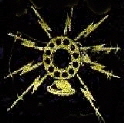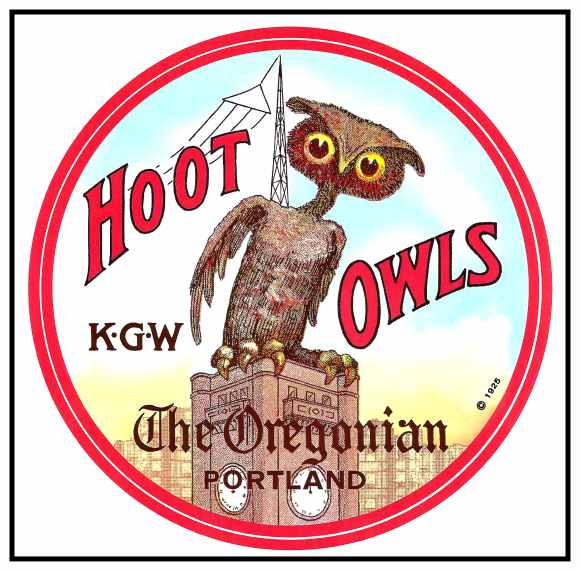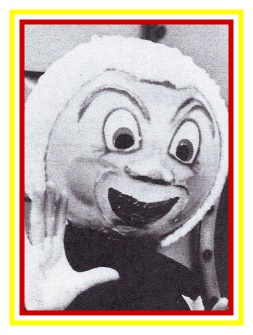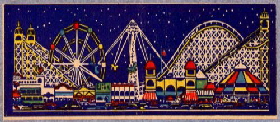




 |
 |
 |
 |
|||
 |
||||||
|
|
||||||||||||||||||||||||||||||||||||||||||||||||||||||||||
|
Estacada Park was located south of the Hotel and it was built to attract throngs of streetcar-riding city dwellers to this amusement resort in the mountain foothills. |
|
|
Estacada is a community that was planned around the generation of electricity for Portland and surrounding communities. |
|
“Summer time is the picnic season and Estacada and Cazadero are the Mecca and Medin of picnickers and thousands of other pleasure seekers as well. Estacada is especially attractive because of its beautiful park and fine hotel. The Estacada and Cazadero train leaves from the east approach of the Morrison Bridge every two hours daily. The distance is 36 miles, and the entire ride is interesting and gives you an excellent idea of the Willamette Valley in the vicinity of Portland. You are whirled rapidly through a fine suburb and farm country with grain fields, orchards, stock pastures, berry farms, chicken ranches and stretches of forests. The line runs into “new country” where the land is being cleared for new homes.” -- The Oregon Journal - July 18, 1909 |
|
|
A Post Office was established here on February 24, 1904 and the town was incorporated in 1905. |
|
Estacada is a spanish word and it means staked out or marked with stakes. It was first suggested by George Kelly as a name for the town site at a meeting of the Oregon Water Power Townsite Company directors on December 27, 1903. Kelly had selected the name at random from a U.S. Map which showed Llano Estacado, in Texas. If Kelly’s suggestion had not been drawn from the hat, the town could have been named Rochester, Lowell or Lynn. The name Estacada is also used in Arizona. |
|
|
The Hotel Estacada opened in 1904 to draw tourists and visitors and ultimately increase ridership on the streetcars. |
|
|
Walkway and Entrance to the Hotel Estacada. |
|
|
The Hotel Estacada with Owners Nels & Alice Lawrey & Nero the Dog. In later years, it was known as the Promenade Hotel until it burned in 1936. City Hall now occupies the site. |
|
|
The Oregon Water Power Railway Co. began streetcar service from Sellwood to Estacada and Cazadero in 1905 on the Springwater Division. In 1907, the name changed to the Portland Railway Light and Power Co. Passenger service continued until 1932. This view is from 1911. |
|
|
This slightly earlier view from 1908 shows Broadway. One of the benches shown at the depot in the previous view is shown above. To the left, you can see the Portland Restaurant & Hotel, as well as the Confectionary and the Ice Cream Store. Directly behind is the First State Bank. |
|
|
Another early view of Broadway, prior to 1908. |
|
|
Early view of the Odd Fellows Hall in Estacada. The Star Shoe Shop and Second Hand Store occupied the storefront. The building was built circa 1904 and torn down in the early 1970s. Key Bank now occupies the land. |
|
|
View of Main Street looking north. |
|
|
The Log LaBarre Hotel was located several miles away along the streetcar line. It was famous for its chicken dinners. The building burned in August 1929. |
|
|
There was plenty of work to be done and many workers came to build their nestegg. Temporary housing for the workers was set up in the Tent City. |
|
|
What tales were told in the old Barber Shop! If only these pictures could talk. |
|
|
Early view of Portland-bound car 1049 at Estacada. |
|
Some two miles above Estacada, we come to Cazadero, at the end of the line. Here the Portland Railway Light & Power Company has worked its modern miracles of transformation by harnessing the turbulent Clackamas to its treadmill, the huge 25,000 horsepower electric plant soon to be more than exceeded by another plant of 40,000 horsepower to be built by the same company further upstream. -- The Oregon Journal - July 18, 1909 |
|
|
Early view of the depot at Cazadero at the end of the line, about 40 miles from Portland. The Store and Post Office are behind the depot. |
|
|
The Power Plant at Cazadero. |
|
A long flight of stairs takes you down to the bridge which slants downward to the powerhouse on the far side of the river. Fine trout fishing is to be had along the Clackamas River above Cazadero, though many sportsmen also praise the angling to be found further back along the line on the beautiful tributaries of Eagle Creek, Deep Creek and Clear Creek. -- The Oregon Journal - July 18, 1909 |
|||||
|
Last updated 10-28-16 |
|||||
|
copyright © 2017 PdxHistory.com |